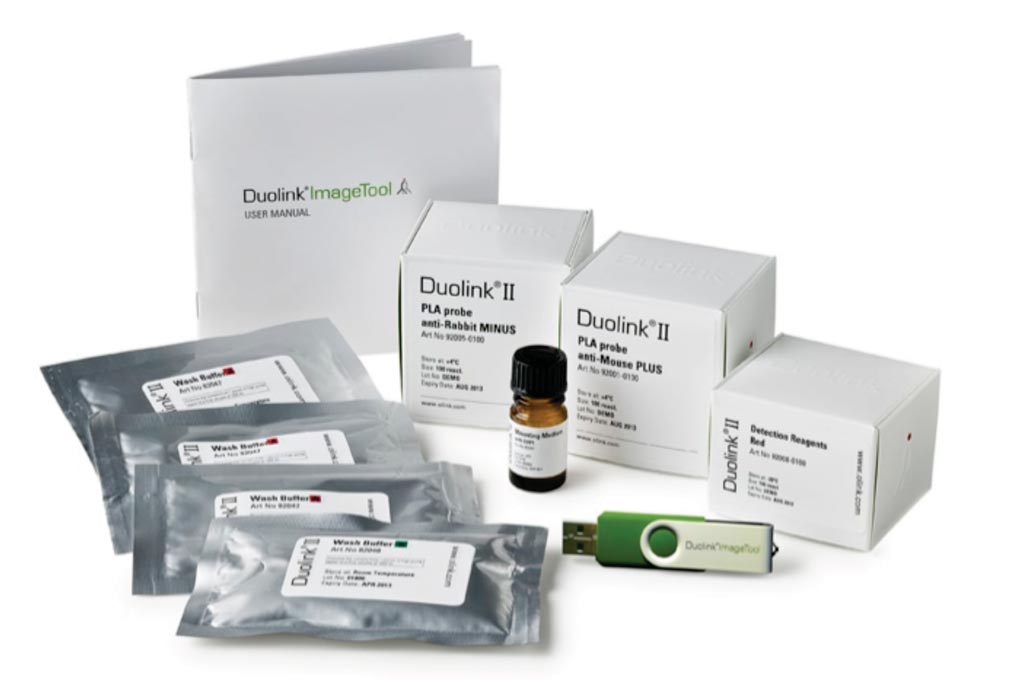Genomic Atlas of Human Plasma Proteome Publicized
By LabMedica International staff writers
Posted on 26 Jun 2018
Although plasma proteins have important roles in biological processes and are the direct targets of many drugs, the genetic factors that control inter-individual variation in plasma protein levels are not well understood.Posted on 26 Jun 2018
Bringing in expression quantitative trait locus (QTL) and protein QTL data, biological pathway clues, drug database insights, and variants identified in prior genome-wide association studies, a team of scientists subsequently searched for plasma proteins contributing to common conditions, such as inflammatory bowel disease, as well as for potential drugs for altering these pathways.

Image: Duolink proximity ligation assay technology extends the capabilities of traditional protein techniques (Photo courtesy of Olink Proteomics).
A large team of scientists collaborating with those at the University of Cambridge (Cambridge, UK) characterized the genetic architecture of the human plasma proteome in healthy blood donors. The study involved about 50,000 participants, and the team systematically quantified levels for thousands of proteins in plasma samples from 3,301 seemingly healthy, genotyped individuals. With these data, they uncovered more than 1,900 interactions between almost 800 genomic regions and nearly 1,500 proteins.
The scientists used the SOMAscan, an aptamer-based multiplex protein assay. They quantified plasma levels of 3,622 proteins in blood samples from 3,301 healthy donors. They set those proteome data alongside genetic profiles for the participants, searching for associations between plasma proteins and 10.6 million autosomal SNPs that were imputed or directly assessed using Affymetrix Axiom UK Biobank arrays. The team's analysis uncovered 1,927 associations involving 1,478 proteins and 764 regions in the genome. Most of those associations, 89%, had not been described previously.
The team noted that 502 of the protein-associated loci appeared to act locally, or in cis, while 228 had trans effects on plasma proteins. The remaining 34 loci appeared to have both cis and trans protein interactions. They validated 106 of 163 proposed protein QTLs using an Olink protein assay (Uppsala, Sweden; www.olink.com) on samples from another 4,998 individuals, noting that the cis pQTLs appeared more apt to replicate than those involving longer-range trans interactions. After exploring the overlap between the proposed pQTLs and expression QTLs reported in the past, the investigators incorporated information from prior genome-wide association study.
The authors concluded that by linking genetic factors to diseases via specific proteins, their analyses highlight potential therapeutic targets, opportunities for matching existing drugs with new disease indications, and potential safety concerns for drugs under development. The study was published on June 6, 2018, in the journal Nature.
Related Links:
University of Cambridge













